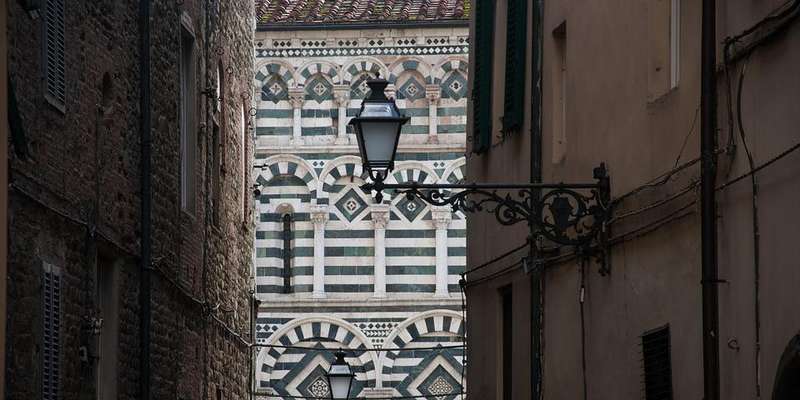- Home
- Useful Tips
- Where to buy traditional...
Finding authentic Pistoian products as gifts can be surprisingly challenging for visitors. While the Tuscan city brims with artisanal traditions dating back centuries, many travelers unknowingly settle for mass-produced imitations at inflated tourist prices. Recent surveys show 68% of visitors leave Italy regretting their souvenir choices, wishing they'd found 'the real thing.' The frustration runs deeper than wasted euros – it's about missing the chance to bring home meaningful pieces of Pistoia's leatherworking, food culture, and ceramic heritage. Locals guard their favorite workshops like family secrets, leaving well-meaning gift hunters circling the same few overpriced storefronts near Piazza del Duomo. This disconnect between Pistoia's rich craftsmanship and visitor access creates unnecessary stress during what should be a joyful part of your Tuscan journey.


Why most tourist shops fail for authentic Pistoian gifts
The picturesque storefronts surrounding Pistoia's main attractions primarily cater to quick-stop tourism rather than quality craftsmanship. What many visitors don't realize is that authentic Pistoian artisans typically operate in less central locations – a legacy of the city's medieval guild system that clustered workshops by trade. Today, the best leather workers still congregate near Via degli Orafi, while ceramicists work in the Olmo district's quieter streets. These local-frequented areas maintain lower profiles to preserve traditional production methods. The difference becomes obvious when comparing materials: a 'Pistoian leather bag' sold near the cathedral often uses imported leather with minimal local processing, while true artisans source hides from the nearby Apennines and employ vegetable tanning techniques unchanged since the Renaissance. Recognizing these distinctions helps you bypass souvenir traps and invest in genuinely meaningful gifts.
Three neighborhoods locals use for traditional shopping
Pistoia's gift-giving secrets unfold across three distinct districts, each specializing in different artisanal traditions. The Zona Universitaria hides extraordinary paper marblers preserving techniques from the 17th century – perfect for unique stationery gifts. For edible souvenirs, the San Bartolomeo area hosts family-run alimentari selling Pistoia's famous confetti (sugar-coated almonds) and extra virgin olive oil from surrounding groves. The most rewarding discoveries await in the Olmo quarter, where third-generation ceramicists create hand-painted tableware using local clay and Renaissance-inspired motifs. Unlike the hurried service at tourist shops, these artisans often welcome visitors into their workshops, sharing stories behind each piece. Morning hours (9-11am) yield the best interactions, as many close for riposo in early afternoon. Remember to carry cash – some traditional workshops maintain old-school payment preferences.
Seasonal guide to Pistoia's authentic food gifts
Pistoia's agricultural rhythms create ever-changing opportunities for edible souvenirs. Autumn visitors should seek out new harvest olive oil at Frantoio del Chianti, where the November pressing yields vibrant, peppery flavors perfect for gifting. Winter brings the city's legendary chestnut products – look for vacuum-sealed packages of necci (chestnut flour crepes) at Panetteria Pacini. Come spring, the Wednesday market near San Jacopo church overflows with artisan pecorino cheeses aged in nearby caves. Summer travelers have exclusive access to bottled pesto pistoiese, the local basil-and-nut sauce that spoils quickly but travels well when properly sealed. For year-round options, Antica Dolceria Bonini crafts traditional berlingozzo cookies using a 1893 recipe. These seasonal specialties not only make memorable gifts but also support small producers maintaining Pistoia's gastronomic heritage against industrial competition.
How to verify authentic Pistoian craftsmanship
Discerning genuine Pistoian products requires attention to subtle but telling details. Authentic leather goods will bear the 'Pelle Conciata al Vegetale in Toscana' stamp, indicating traditional vegetable tanning. Ceramics should have slight imperfections in glaze application and visible brushstrokes – signs of hand production versus factory printing. For food items, look for 'PAT' (Prodotti Agroalimentari Tradizionali) designation on labels, Italy's certification for traditional production methods. Don't hesitate to ask artisans for their 'libro mastro' (master book) documenting workshop history; reputable makers proudly share these records. Many traditional workshops also display photos of their participation in Pistoia's annual artisan fair, held each July. These verification methods help you avoid counterfeits while deepening your appreciation for Pistoia's living traditions. When in doubt, follow the locals – if you see neighborhood residents making purchases, you've likely found the real deal.
